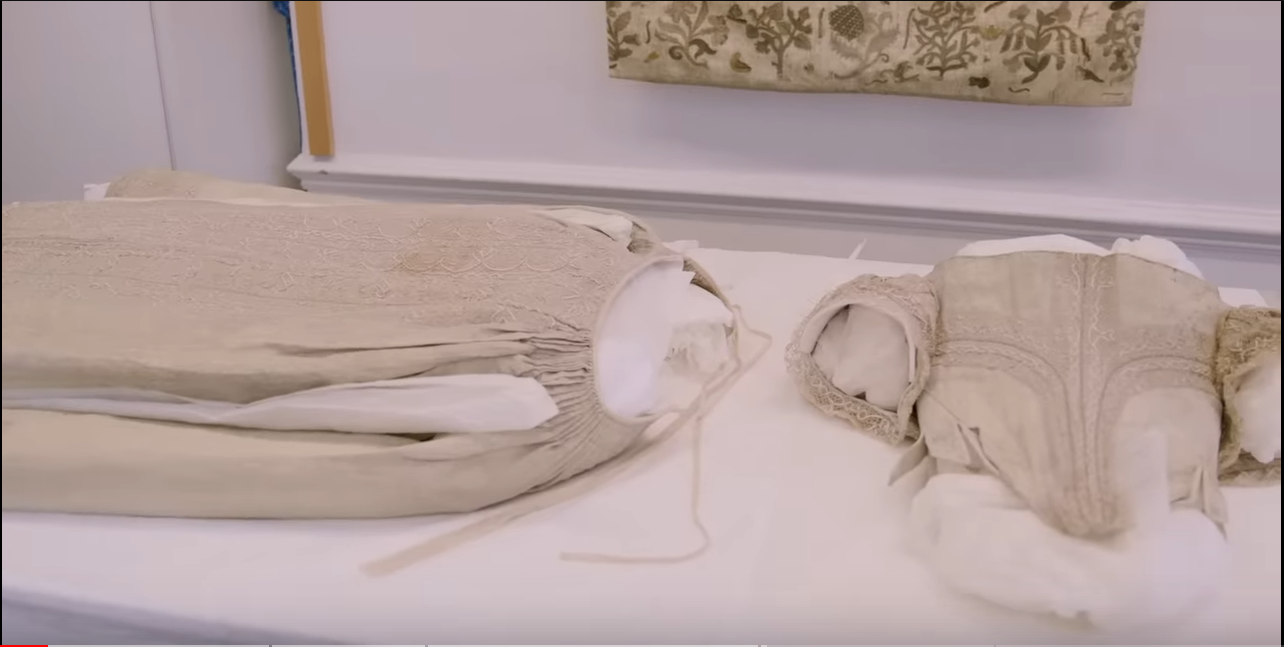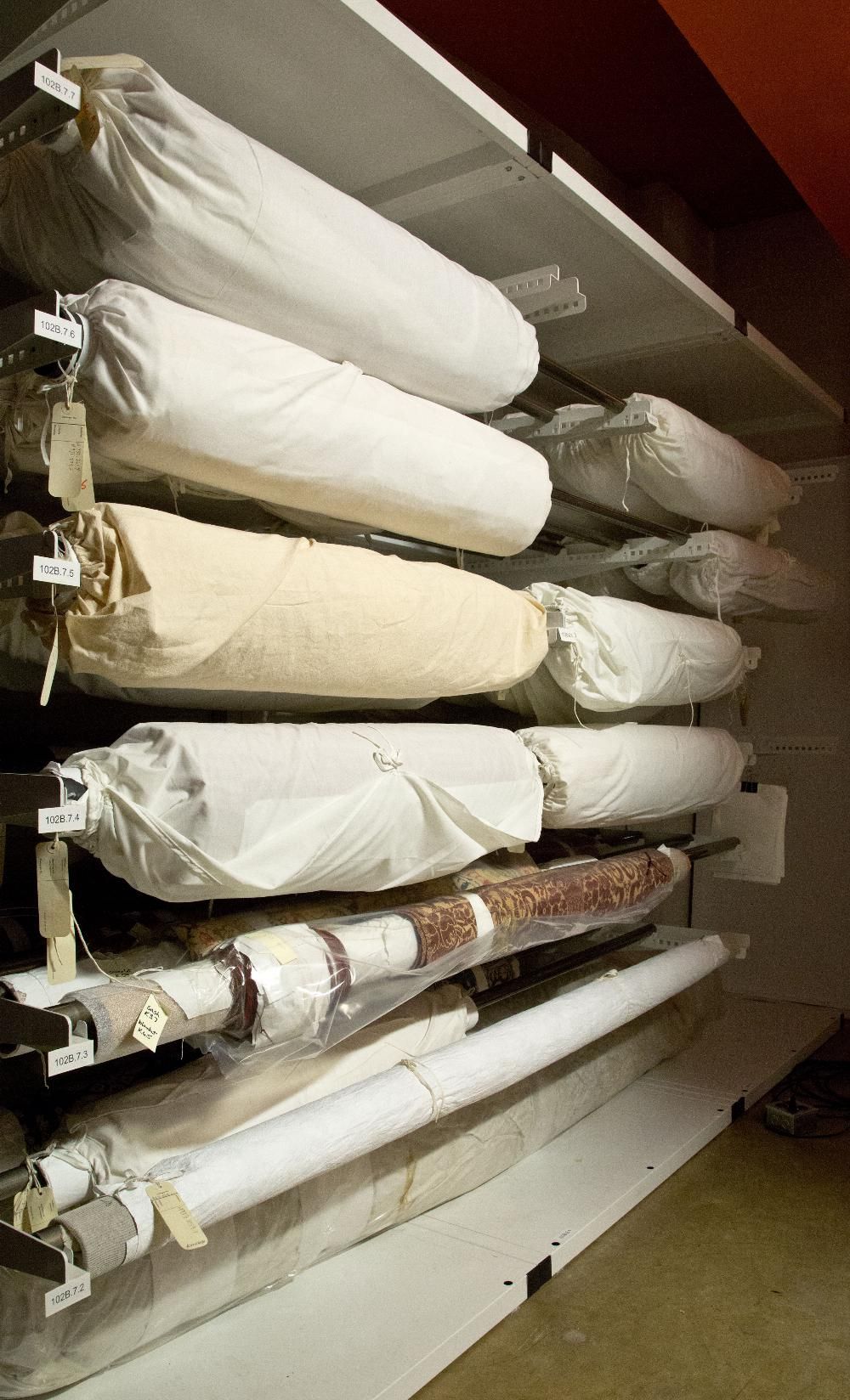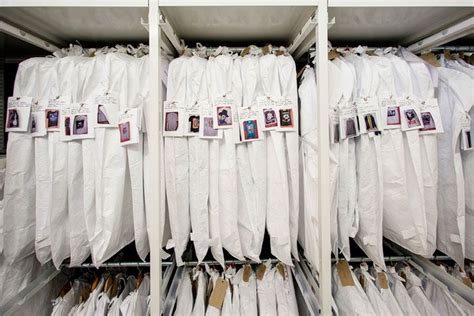
Textile Restoration

Textile Restoration

Flat storage allows the textile to rest in a horizontal position permitting the fibers to relax and the textile to maintain its natural tension. This can be an acid free box, shelf, or drawer that is large enough to accommodate the entire textile lying flat. Ideally the textile should be stored with no folding as aged fibers can become brittle and break at these points, however if this is not permissible then it should be folded with acid free tissue paper formed into shape and placed inside the fold to prevent creases from forming.
If the textile contains metallic threads or similar elements, a sheet of acid free tissue paper should be placed between the layers to protect adjacent areas of the textile from encountering sharp elements or corrosive products.

Rolled storage, as the name implies, is when a textile is rolled around a sturdy tube usually two to six inches in diameter depending on the condition, size, and weight of the textile. Rolled storage is well suited to pieces that are stable and strong but too large or heavy to be housed flat in shelves or drawers.
Before rolling, lay the textile flat and face down on a clean work surface large enough to accommodate the entire piece. Smooth it out removing any creases or bubbles that may become imbedded in the textile. Then align the top and bottom edges as well as the salvages to ensure even rolling, taking care when rolling to keep the tension even. Cover the rolled storage tube with acid free tissue and secure with ties at regular intervals.
If possible, rolled textiles should be suspended so that no part is resting against a flat surface. This can be accomplished by running a heavy gauge pipe or a sealed wooden towel through the cardboard tube and suspended on an appropriate support.

A costume hanger is a heavily padded hanger supported by an inert hanging device such as molded plastic or wood that has been sealed to remain inert, unpadded metal hangers should never be used for the possibility of rust. Padded hangers or costume hangers are viable options for a clothing article of good construction and are very stable however, if a piece is heavily beaded, bias cut, of a very delicate complex construction, or is simply quite heavy, it should be he stored in a different method if possible. Heavy items should not rely entirely on the shoulder area for support. Heavy skirts, trains or separate pieces should be supported by using a cotton twill tape stitched carefully on the waistband or steams extending up to the hanger.
Textiles that have been framed or mounted should be in archival grade materials and stored flat wherever possible. When on display, sturdy supports should be used to distribute the weight of the piece and prevent it from falling.
Here is a link to webpage at the Victorian and Albert Museum covering the conservation and preservation of a historic wedding gown.